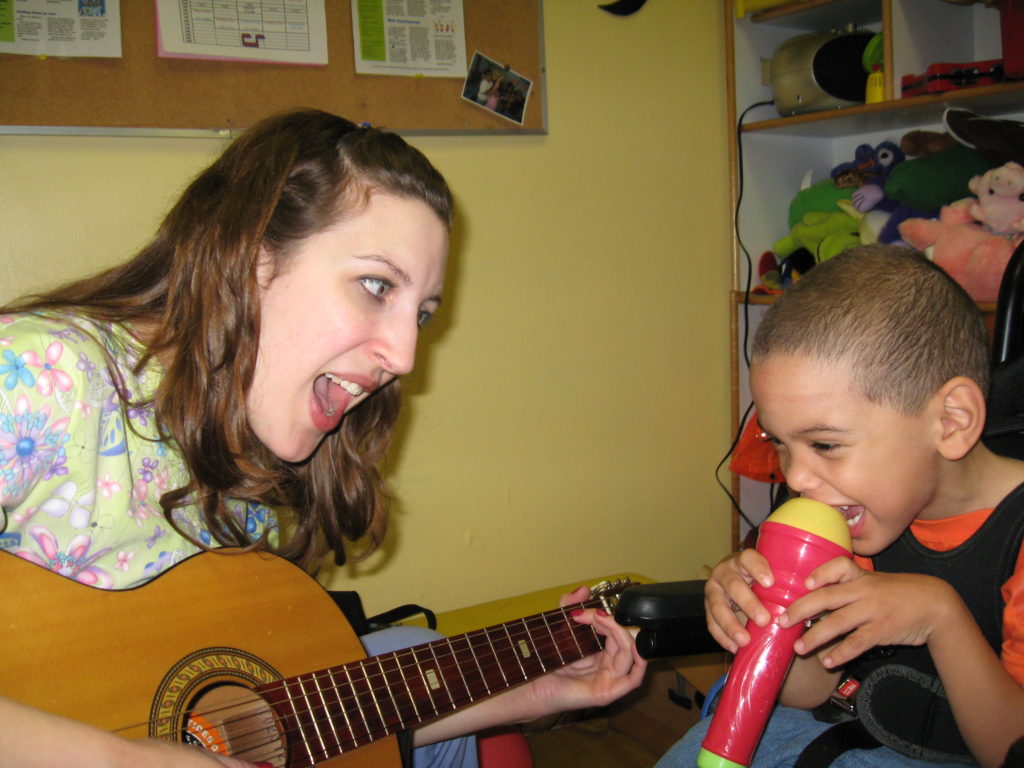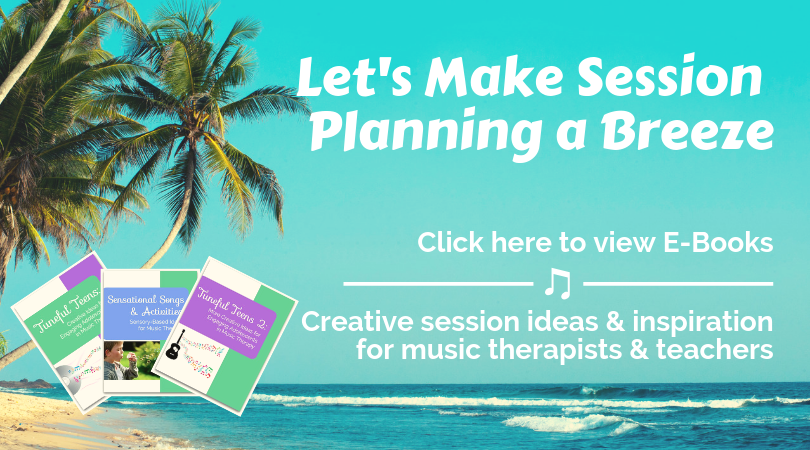
There is nothing more frustrating than when you’re leading a session, singing with enthusiasm, trying your hardest, and look out to see a group of children with…blank stares. No participation, they’re just sitting there.
You’ve spent hours preparing, hours practicing, and…nada.
Not a good feeling, am I right?
During my twelve years working as a music therapist I’ve seen a few blank stares. I’ve since come up with a few tried and true strategies to ensure my clients are engaged and participating in (almost!) all activities. As MTs we know that when children are engaged and participating, they are more likely to achieve the goals we’ve set out for them.
So, how can we effectively engage our young clients?
There are three main ways: Praise, Notice, Prompt, or what I like to call “PNP” for my U Miami practicum students.
PNP = Praise, Notice, Prompt
Praise – Positively affirm what you are seeing by being specific. Rather than “Great job!” (which I am guilty of saying from time to time for sure!), say “Great drumming James!” or “Awesome job passing the xylophone.”
Notice – Articulate specifically what you are seeing and noticing by saying “I see____________” or “I noticed ______________.” Examples: “I see Katie is shaking her shaker so high!” or “I noticed Max waved his scarf side to side with the music.”
Prompt – Encourage participation from a child who is not yet participating. Examples: “Come on Kelly, let me see you stomp your feet!” (Side note: Don’t ask “Can you __________?” because their answer may be no. Try: “Let me see you clap your hands!” or “Everybody, arms up!”)
A few more tidbits:
- You’ll want to keep these encouraging words and phrases short and sweet. Be specific, but concise. When you’re first starting to incorporate these prompts, fit them in between verses while you continue to strum or play.
- It takes practice! It’s easy to sing a song straight through from top to bottom. It’s not so easy to sing while sprinkling in these little phrases. I encourage my practicum students and interns to add in these phrases while they’re practicing at home so it will feel more natural once they’re in the session.
- Always be observing. I tell my students that you need to know your songs like the back of your hand. That way, you’re not focusing on chords or lyrics, you’re focusing on what your clients are doing! When you’re focused on your clients, you can praise, notice and prompt as I’ve described above.
I’d love to hear from you! How do you encourage participation in your clients? Try one (or all!) of these strategies out in your next session and let me know how it goes!
*All pictures used with written parental permission



Leave A Comment